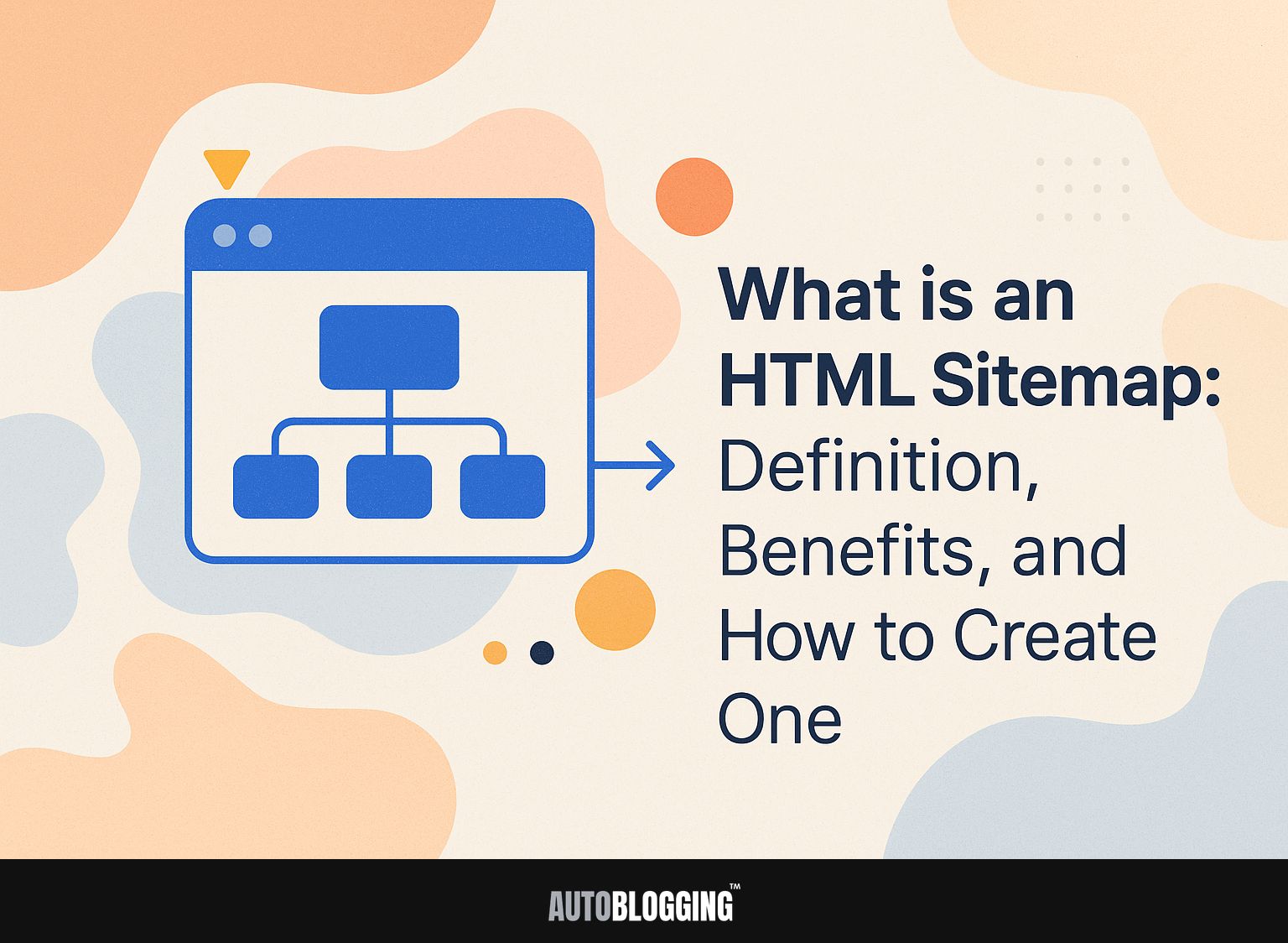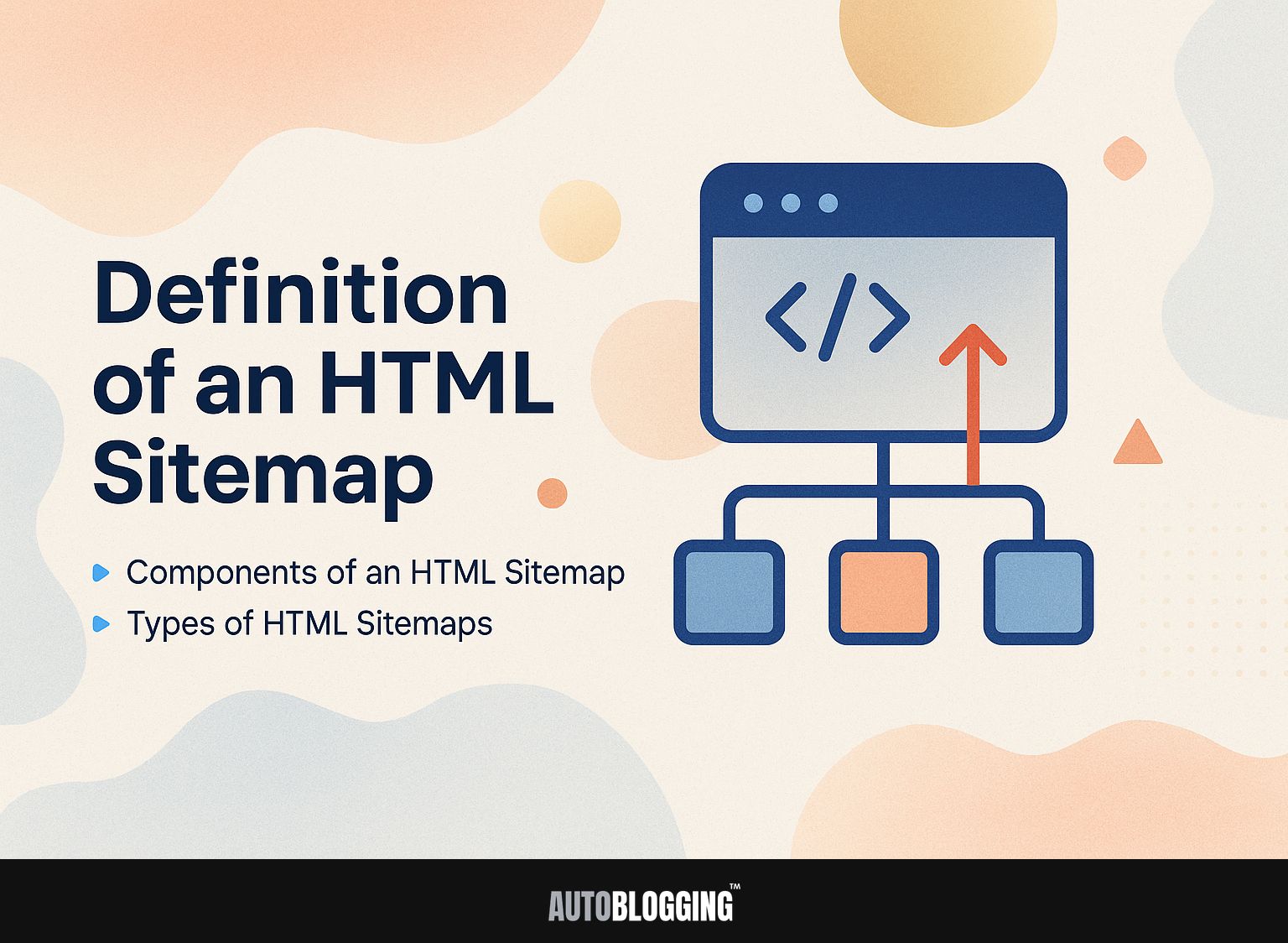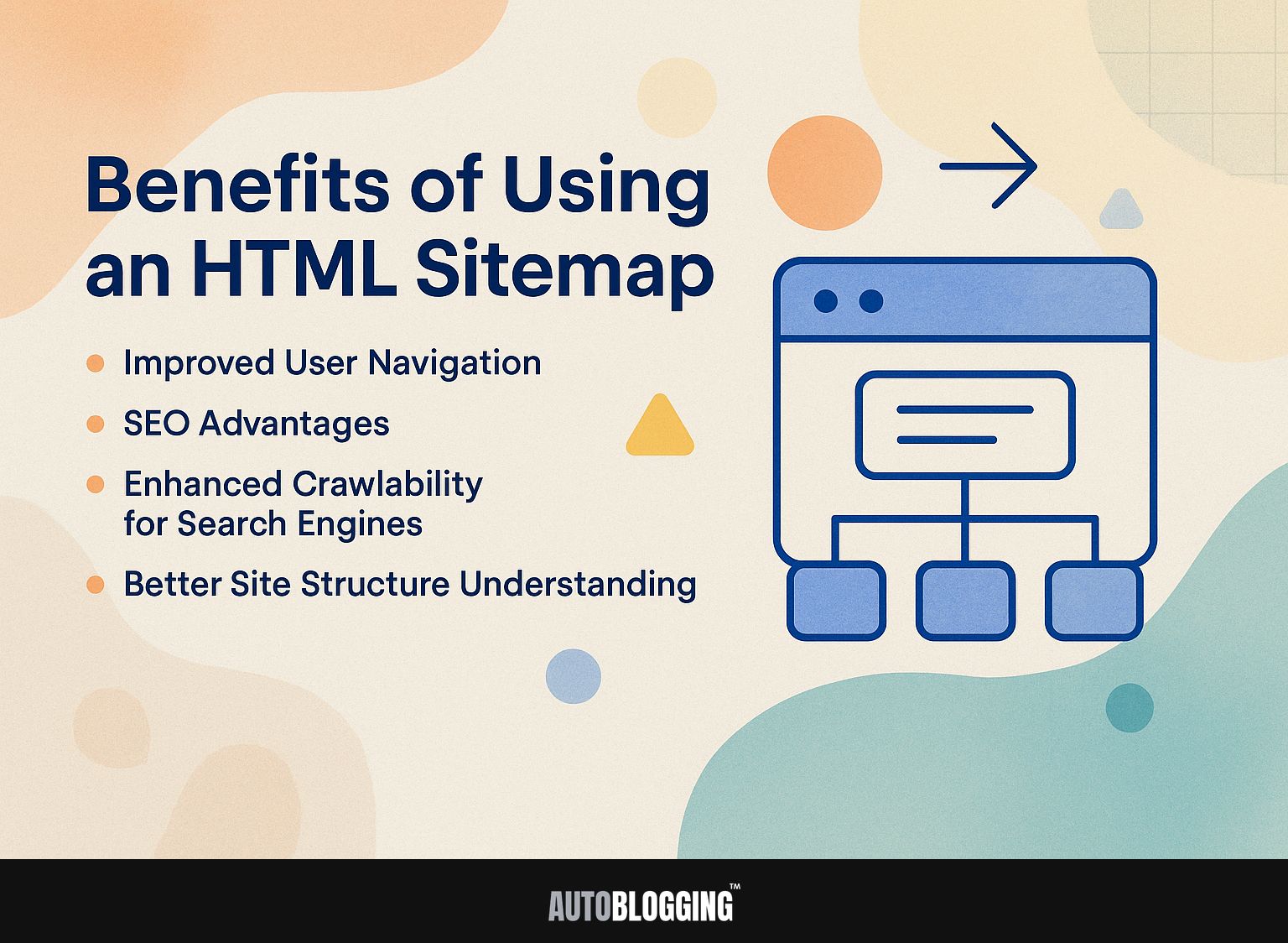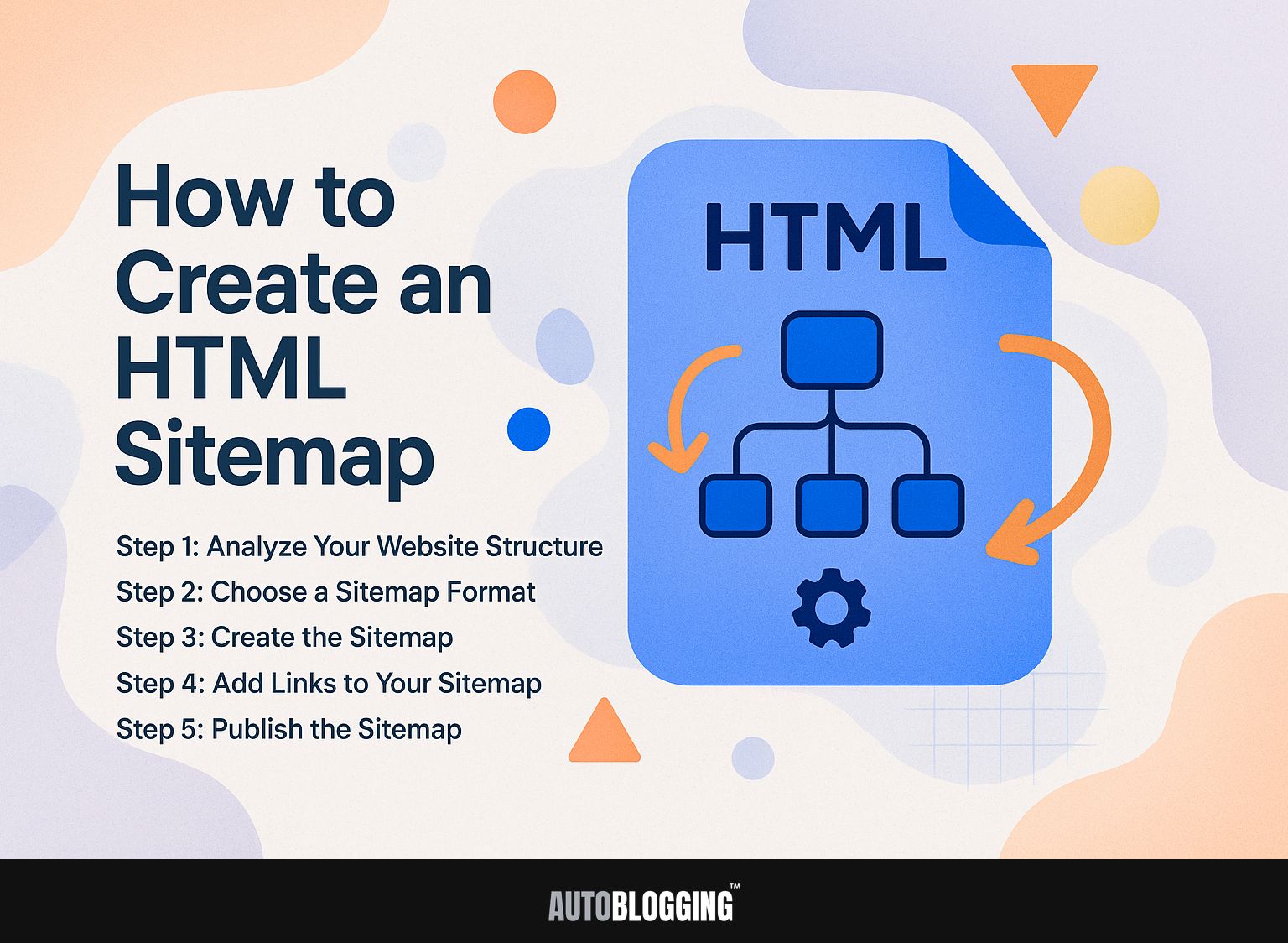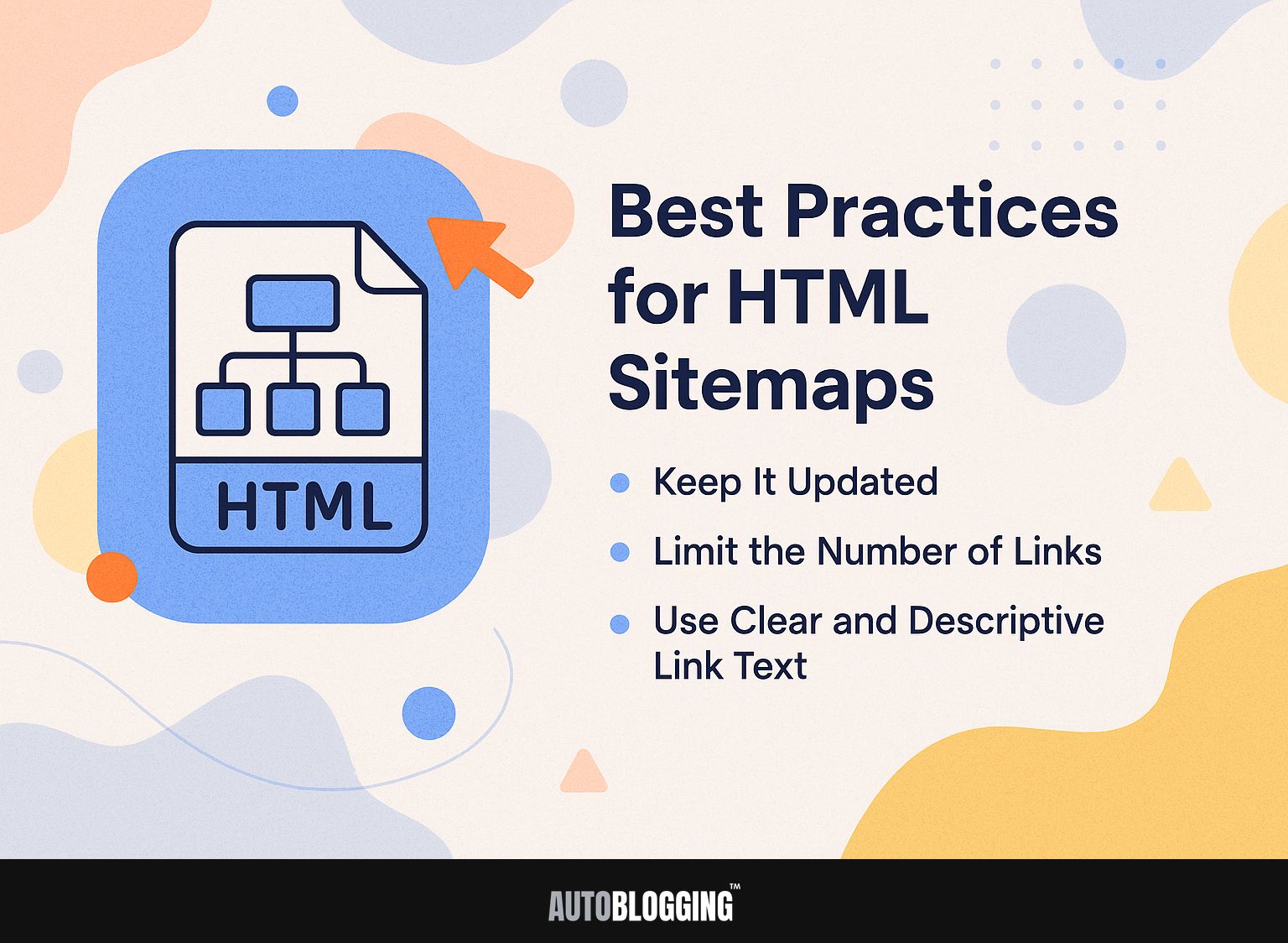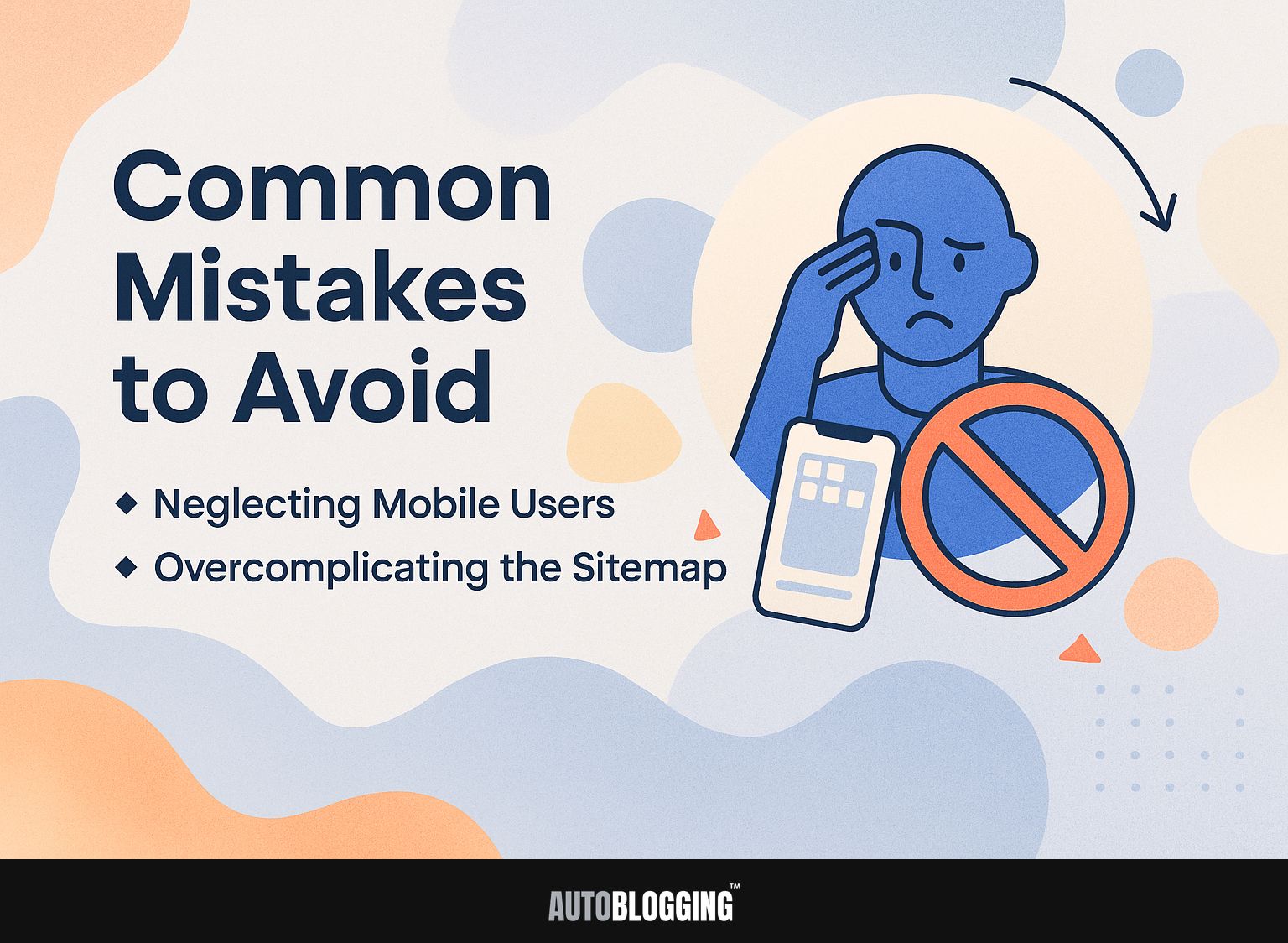An HTML sitemap is a useful tool for making it easier to move around a website, helping both visitors and search engines like Google. Unlike an XML sitemap, which is designed for crawling, an HTML sitemap presents a clear overview of your site’s structure, improving user experience. This article will describe what HTML sitemaps are, talk about their benefits, and give practical examples to help you build one that improves your site’s visibility and makes it easier to find your way around.
Key Takeaways:
- An HTML sitemap is a list of all the pages on a website that is organized in a hierarchical structure.
- An HTML sitemap can make it easier for users to find their way around, help with SEO, and make it easier for search engines to scan the site.
- To create an HTML sitemap, analyze your website structure, choose a sitemap format, create the sitemap, add links, and publish it.
Contents
- Definition of an HTML Sitemap
- Benefits of Using an HTML Sitemap
- How to Create an HTML Sitemap
- Best Practices for HTML Sitemaps
- Common Mistakes to Avoid
- Frequently Asked Questions
- 1. What is an HTML Sitemap and why is it important?
- 2. What are the benefits of having an HTML Sitemap?
- 3. How is an HTML Sitemap different from an XML Sitemap?
- 4. How do I create an HTML Sitemap for my website?
- 5. Do I need an HTML Sitemap if my website is already indexed by search engines?
- 6. Is an HTML Sitemap necessary for all types of websites?
1. What is an HTML Sitemap?
An HTML sitemap is a page that shows all website pages in an organized way, helping users and search engines see how the site is arranged. This tool improves user experience by allowing easy access to different content sections.
For instance, if your website has multiple categories such as blog posts, product pages, and contact information, an HTML sitemap provides direct links to these areas. Tools like Screaming Frog or Google Search Console can help you generate an HTML sitemap easily.
XML sitemaps are meant for search engines to grasp site layout, while HTML sitemaps focus on helping users find information easily.
2. Importance of HTML Sitemaps
HTML sitemaps give users a simple way to move around a website, which can reduce quick exits and encourage them to stay longer.
Having an HTML sitemap can improve your site’s SEO. Search engines like Google use sitemaps to crawl your site more effectively, indexing all pages and improving visibility in search results. Understanding this process is crucial, especially since web crawlers play a significant role in how search engines access and interpret your site content (learn more in our definitional guide to web crawlers).
Research shows that 75% of people like websites that are easy to move around. This preference directly correlates to increased user engagement, with 60% of users more likely to return to a well-structured site.
Adding an HTML sitemap improves how easy your site is to use and helps improve your search rankings gradually.
Definition of an HTML Sitemap
An HTML sitemap is a complete list of web pages meant to help users find their way around a website, usually shown in a structured layout.
1. Components of an HTML Sitemap
Key components of an HTML sitemap include links to main categories, subcategories, and important pages, ensuring clear site organization.
Besides main categories and subcategories, a good HTML sitemap should include links to important pages like the contact page, privacy policy, and about us section.
For example, an online shopping website such as Amazon uses its sitemap to improve user experience by helping customers find product categories, deals, and customer service quickly.
Tools like Google Search Console can check how well the sitemap is doing, ensuring it is up-to-date and functions properly for people browsing and for search engines.
2. Types of HTML Sitemaps
There are primarily two types of HTML sitemaps: user-focused sitemaps for visitors and SEO-focused sitemaps for search engines, each serving distinct purposes.
Sitemaps designed for users, such as the one on The New York Times website, help visitors find their way around by clearly displaying the site’s main sections and articles.
Conversely, SEO-focused sitemaps are structured primarily for search crawlers, detailing all reachable pages within a website, often used by tech blogs for better indexation.
An effective hybrid approach can improve both usability and visibility, ensuring that visitors find relevant content quickly while also satisfying search engine requirements.
Benefits of Using an HTML Sitemap
An HTML sitemap makes it simpler for users to find their way around the website, improves SEO rankings, and provides a better overview of the website’s structure. For those curious about the intricacies of how search engines discover and index pages, understanding what a web crawler is and its significance can be quite enlightening.
Having a clear HTML sitemap makes it easier for users to move through the site, resulting in a 30% rise in satisfaction and fewer people leaving the website quickly.
- To implement an effective HTML sitemap, start by structuring it logically; group related content together, such as product categories and key pages.
- Use tools like Google Search Console to see how search engines look at your site and confirm all parts are shown.
- Think about using WordPress plugins like Simple Sitemap or WP Sitemap Page to easily create sitemaps.
- Watch how visitors interact with your site and make updates to your sitemap based on their habits, ensuring easy use.
2. SEO Advantages
HTML sitemaps help with search engine optimization by allowing search engines to index web pages more effectively, which can increase a site’s visibility in search results. These sitemaps act as organized guides for search engines, helping them locate and list all important pages on your site.
To make sure your HTML sitemap works well, try using tools like Semrush to check how it’s doing. With Semrush, you can identify broken links or missing pages that need attention.
Make sure to update your sitemap each time you add new content. This proactive approach helps maintain optimal crawl efficiency and aids in indexing any new articles, products, or services you offer.
3. Improved Accessibility for Search Engines
HTML sitemaps facilitate increased crawlability for search engines, ensuring all web pages are indexed effectively, which is critical for maintaining high page rankings.
To make it easier for search engines to crawl your site, make an HTML sitemap with links to each important page. Use tools like Screaming Frog to find all current pages and make sure they are updated often. Regular maintenance helps prevent crawl errors caused by outdated links or removed pages.
Think about placing the sitemap in the footer of your website. This helps users and bots find their way around your content easily. Consistently reviewing this sitemap can significantly improve your SEO performance over time.
4. Better Site Structure Understanding
An HTML sitemap provides a structured overview of a website, helping both users and search engines to understand the relationship between different pages.
Websites like H&M Group and Target use HTML sitemaps successfully. H&M’s sitemap shows main sections like Men, Women, and Kids, allowing users to find their way around easily.
Meanwhile, Target’s sitemap features sections for weekly ads, promotions, and specific departments. Both sites keep their sitemaps current, which helps SEO by directing search engine crawlers through the site’s structure.
To create your own, use tools like Screaming Frog or Google Search Console to list all URLs and organize them logically.
How to Create an HTML Sitemap
To create an HTML sitemap, you need to go through the process of examining your website’s layout and organize the sitemap clearly for visitors (as mentioned in our guide on what a web crawler is and how it works).
Step 1: Analyze Your Website Structure
Begin by thoroughly analyzing your website structure to identify key areas and content that should be included in the sitemap.
Use tools like Screaming Frog to examine your site and create a visual map of its structure. This helps pinpoint important pages and potential gaps.
Google Analytics can show information about how users interact with your site, identifying which pages get the most visits and interactions. Knowing how your website is organized is important because it helps you focus on content that makes it easier for users to find their way around and improves search engine rankings.
Start by mapping out your main categories and subcategories, ensuring that your sitemap reflects a logical flow to improve both usability and search engine indexing.
Step 2: Choose a Sitemap Format
Select between a hierarchical format for better clarity or a flat format for simplicity based on your website’s complexity.
A hierarchical format is advantageous for websites with extensive content, such as e-commerce sites or blogs covering multiple topics. It guides users through categories and subcategories so they can quickly locate what they need.
For instance, an online store might structure products by type, brand, and price range.
Conversely, flat formats work well for smaller websites or personal blogs where content is minimal. In this case, a one-page design can show information clearly, helping readers go through the content easily without interruptions.
Step 3: Create the Sitemap
Use tools like Magical Apps or WordPress plugins to generate sitemaps automatically, ensuring all necessary links are included.
For a seamless experience, consider using Google XML Sitemaps for WordPress, which is beginner-friendly and free. It creates a sitemap each time you publish new content.
Alternatively, if you want more control, Yoast SEO provides a tool that is simple for beginners and strong for experienced users, costing about $99 per year.
Both tools help search engines find your site, which improves your online presence. Just set up the plugin, go through the instructions, and your sitemap will be prepared in a few minutes.
Step 4: Add Links to Your Sitemap
Include all key web pages in the sitemap. This helps both people and search engines find information on your site easily.
Including internal links makes it easier for users to move around a website and helps with search engine rankings. For example, Naukri.com uses links in job listings that direct users to related job categories or advice on improving resumes.
To add links, highlight relevant text in your content and use anchor text that describes the linked page. Aim for a balance; too many links can overwhelm, while too few can limit usability.
Check your links often to keep them useful and working well, which helps users move around easily and stay interested.
Step 5: Publish the Sitemap
Publish your HTML sitemap on a dedicated page and link it in the website footer for easy access, maximizing its visibility to users and search engines.
Make sure your sitemap follows web accessibility rules so that everyone, including people with disabilities, can use it easily.
Use clear headings and correct HTML structure to make content easier to read. Tools like Google Search Console can help verify that your sitemap is indexed correctly, while accessibility checkers like WAVE can highlight any compliance issues.
Regularly update the sitemap to reflect new content, keeping it a reliable resource for both users and search engines alike.
Best Practices for HTML Sitemaps
Using good methods for HTML sitemaps makes them useful for finding pages and improving search engine results, which improves how users interact with the site. As mentioned in our guide on how search engines index pages, effective sitemaps play a crucial role in ensuring all content is easily discoverable.
1. Keep It Updated
Regularly update your HTML sitemap to reflect new content and changes in website structure, ensuring ongoing relevance and utility.
To keep your sitemap updated, employ tools like Yoast SEO or Google Search Console. Yoast automatically updates your sitemap each time you add or delete content, reducing your manual workload significantly.
For a manual approach, check your sitemap monthly against your main content categories and add any missing URLs. Remember, outdated sitemaps can lead to decreased crawl efficiency, negatively impacting your SEO.
By frequently updating your site, search engines can understand your content better, which helps more people find your site and can lead to more visitors.
2. Limit the Number of Links
To avoid overwhelming users, limit your HTML sitemap to a manageable number of links, ideally under 100, focusing on the most important pages.
Using fewer links makes it easier to find things and improves how users interact with the site. For instance, a site like Wikipedia effectively manages its links by categorizing them clearly, allowing users to find information quickly without feeling lost.
Tools such as Google’s Search Console can help gauge which pages attract traffic, allowing you to prioritize these in your sitemap.
Similarly, tools like Yoast SEO can make your sitemap better for search engines by featuring only the key links, which aids in crawling and enhances site performance.
3. Use Clear and Descriptive Link Text
Use clear and descriptive words for link text in your HTML sitemap. This helps users understand what the links lead to.
For example, instead of using unclear words like “click here,” use specific descriptions such as “View our latest blog posts” or “See product categories.” This clarity helps users decide easily, lowering frustration.
Tools like Screaming Frog can help analyze your existing link text, highlighting areas for improvement. Changing the link text improves user experience and helps your site’s SEO because search engines prefer descriptive text for better indexing.
Common Mistakes to Avoid
It’s important to avoid common mistakes when creating an HTML sitemap to keep it user-friendly and improve SEO.
1. Neglecting Mobile Users
Not improving HTML sitemaps for mobile users can result in a bad experience since mobile devices now make up more than half of all web traffic.
To improve mobile use, make sure your HTML sitemap is easy to use and reachable. Use design frameworks like Bootstrap or Foundation, which adjust layout elements based on device size.
Businesses such as Amazon and eBay do well with mobile users by making their menus clear and their site maps easy to follow, with buttons that are simple to tap.
Implement structured data markup to help search engines understand your site’s hierarchy, which can improve indexing and user engagement. Regularly check your site on different devices to make sure it functions correctly.
2. Overcomplicating the Sitemap
Overly complex HTML sitemaps can confuse users, leading to frustration and increased bounce rates, so simplicity is key.
A well-organized sitemap should be simple to use and easy to find your way around. For example, sites like Wikipedia effectively balance detail with simplicity; their sitemaps clearly categorize vast information while avoiding clutter.
Similarly, the BBC’s sitemap is arranged by topics and subtopics, allowing users to find information quickly. Tools like Screaming Frog can help audit your existing sitemap, identifying areas for simplification.
Try to keep categories to seven or fewer at each level and make sure each link helps users move smoothly through your website.
Frequently Asked Questions
1. What is an HTML Sitemap and why is it important?
An HTML Sitemap is a file that contains a list of all the pages on a website. It serves as a directory for search engines to easily crawl and index the content on the website. It is important because it helps improve the website’s visibility and accessibility for both search engines and users.
2. What are the benefits of having an HTML Sitemap?
The advantages of having an HTML Sitemap are easier browsing on your website, higher rankings in search engines, and more visitors to your site. It also helps organize the content on the website and makes it easier for users to find what they are looking for.
3. How is an HTML Sitemap different from an XML Sitemap?
An HTML Sitemap is a human-readable file that is created for website visitors, while an XML Sitemap is machine-readable and created specifically for search engines. An HTML Sitemap is also typically organized in a hierarchical structure, while an XML Sitemap is organized in a flat structure.
4. How do I create an HTML Sitemap for my website?
To create an HTML Sitemap, you can use a sitemap generator tool or create it manually using HTML coding. The sitemap should include all the pages on your website and be organized in a logical and user-friendly manner. It is also important to regularly update the sitemap as new content is added to the website.
5. Do I need an HTML Sitemap if my website is already indexed by search engines?
Even if search engines have already indexed your website, an HTML Sitemap can still help by giving search engines a clear path to move through your content. It can also help improve the user experience on your website.
6. Is an HTML Sitemap necessary for all types of websites?
An HTML Sitemap is not required for all types of websites, but it is highly recommended for larger and more complex websites with a lot of pages and content. Smaller websites may not see as much benefit from having an HTML Sitemap, but it can still be a helpful tool for users to easily find what they are looking for on the site.



